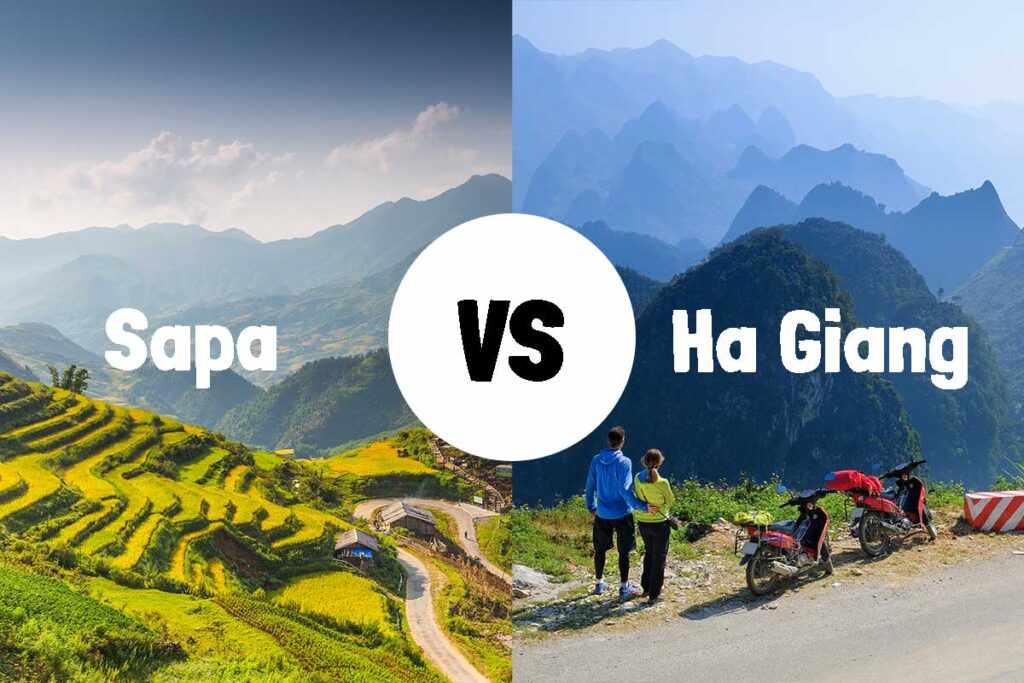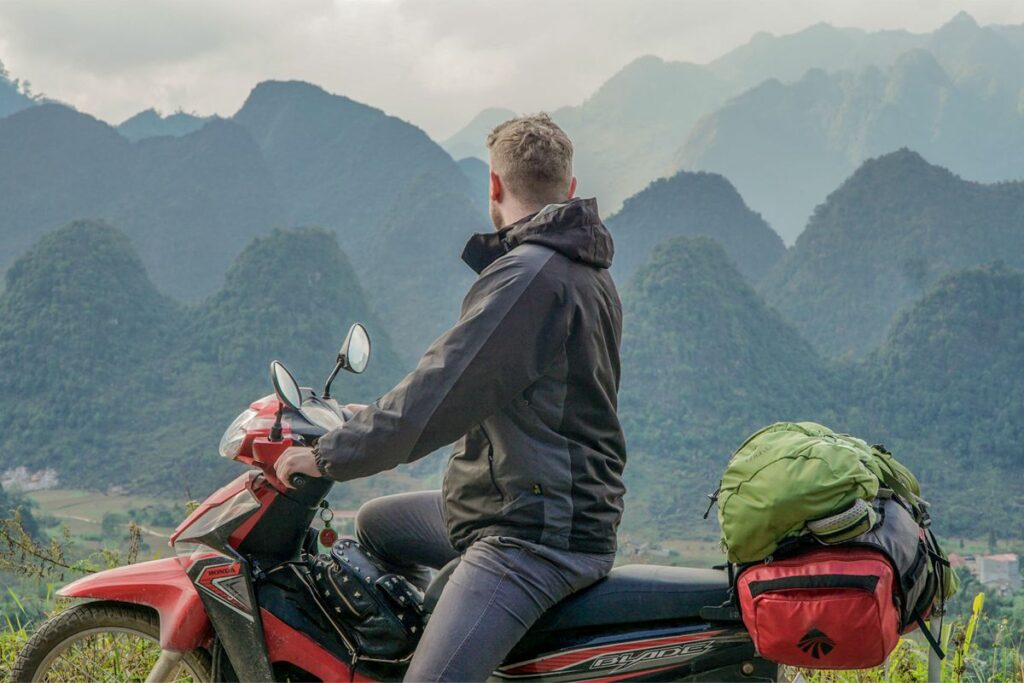Sapa or Ha Giang: The dilemma
Choosing between Ha Giang and Sapa can be tricky, as both offer unique experiences, but each caters to different travel styles.
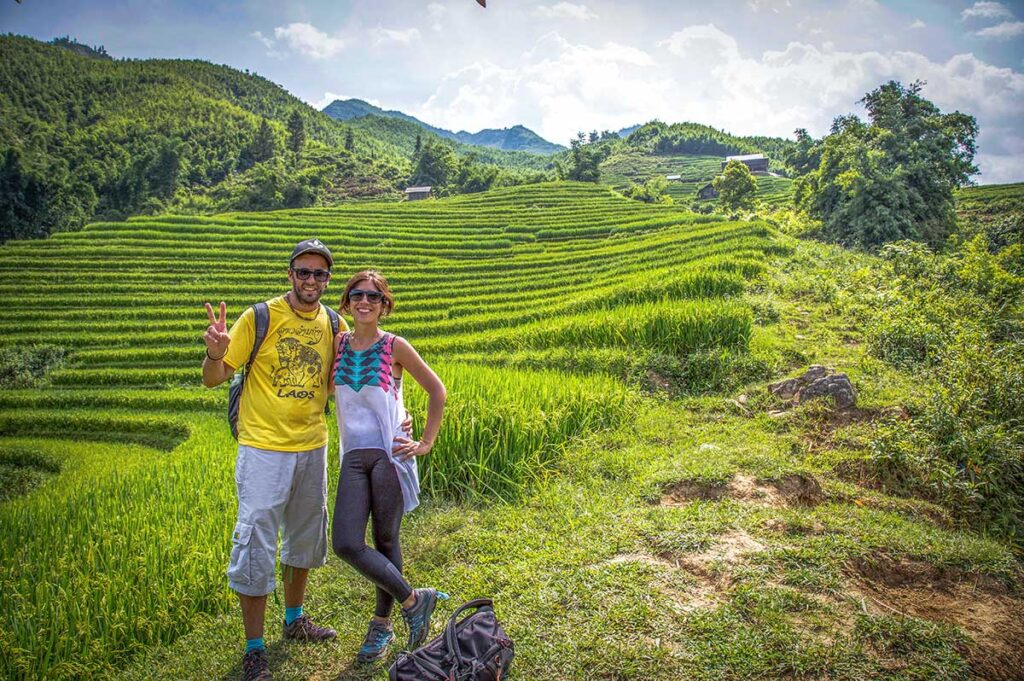
Sapa is known for its breathtaking terraced rice fields, vibrant ethnic minority villages, and trekking opportunities, making it a popular destination for those seeking a more accessible adventure.
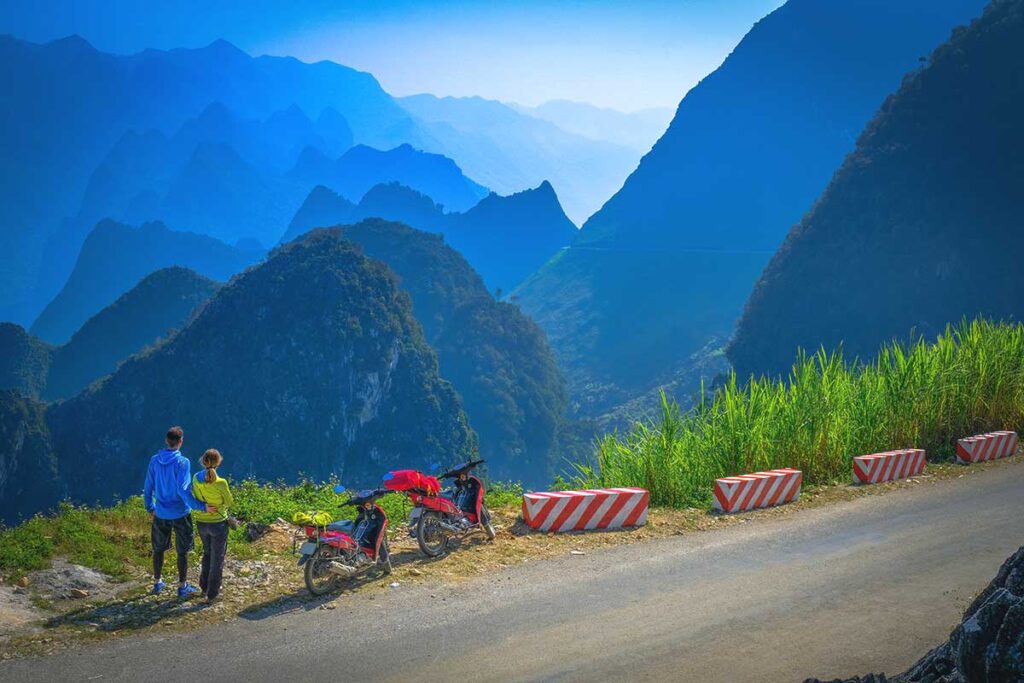
On the other hand, Ha Giang is famous for its rugged, dramatic landscapes, the adventurous Ha Giang Loop, and a more remote, off-the-beaten-path vibe — perfect for those looking to escape the crowds and immerse themselves in Vietnam’s raw beauty. Whether you’re looking for comfort and cultural exploration or rugged terrain and authenticity, both destinations are sure to impress.
This guide will help you understand the key differences so you can make an informed decision about which one suits your travel preferences.
Sapa and Ha Giang combination tour
If you’re keen to experience both Sapa and Ha Giang, it’s definitely possible to do so within a 6-day itinerary. There’s a direct bus between Sapa and Ha Giang, though it takes around 5 hours, so it can take up most of a day. This means you can plan for a 2-day stay in Sapa and a 3-day stay in Ha Giang, with a travel day in between — all within 6 days.
While you can save some time with sleeper buses or night transfers, which allow you to travel while resting, you’ll still need to account for the time spent getting to and from each destination. If you prefer not to rush, allowing an extra day or two might make the trip more comfortable. However, for those who want the best of both worlds, with trekking in Sapa and road touring in Ha Giang, a 6-day itinerary is doable.
Sapa & the Ha Giang Loop – The Ultimate Combo Tour
- Experience: Trek through Sapa’s terraced rice fields and explore Ha Giang’s stunning loop.
- Includes: All transfers Hanoi – Sapa – Ha Giang and back, accommodation, meals, guides, and activities.
Ha Giang vs Sapa: A quick overview
Both Ha Giang and Sapa offer stunning landscapes, but each has its own distinct appeal. Here’s a quick comparison to help you decide which destination is the best fit for your trip:
Ha Giang has better…
- Stunning mountain scenery: Ha Giang’s landscapes are rugged, raw, and offer an off-the-beaten-path vibe.
- More places to visit: The Ha Giang Loop alone provides numerous unique stops and sights.
- Authenticity: Less influenced by mass tourism, Ha Giang retains a genuine local culture.
- Bigger adventure: The thrill of navigating the Ha Giang Loop by motorbike or car through rugged terrains is unmatched.
What’s less in Ha Giang
- Driving: While driving the Ha Giang Loop is exhilarating, consecutive days of travel can be exhausting.
- Distance from Hanoi: Ha Giang requires a longer journey from Hanoi.
- Accommodations: While there are accommodations, they’re fewer and more basic, adding to the region’s authentic charm but less comfort.
Sapa has better…
- More accessibility: Sapa is easier to reach from Hanoi, with various transport options like trains and buses.
- More activities: Sapa offers a variety of options, from trekking and cable car rides to scenic drives.
- Diverse accommodations: From budget hostels to luxury resorts, Sapa has a wide range of accommodation.
- Developed tourism: With more developed infrastructure, Sapa offers more organized tours and modern amenities.
What’s less in Sapa
- Lost authenticity in Sapa town: While the town is vibrant, it has become more commercialized, though nearby villages retain their charm.
- Seasonal beauty: The famous rice terraces are most stunning during the cultivation periods, and outside of these times, they may not be as vibrant.
Key highlights of Sapa and Ha Giang
Sapa – Trekking through terraced rice fields
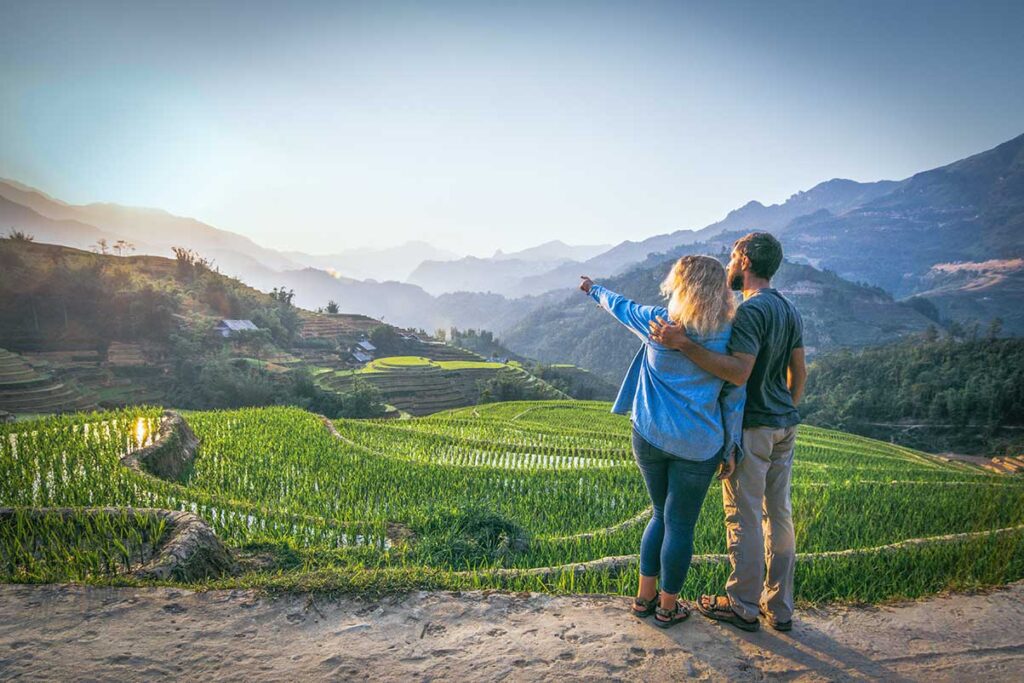
Sapa is famous for its stunning terraced rice fields, perfect for trekking. Hiking through local villages, meeting ethnic minority groups, and taking on Fansipan (Vietnam’s highest peak) are some of the top highlights. Sapa is more developed, offering a wider variety of activities and modern amenities, making it ideal for those seeking adventure with added comfort.
Ha Giang – The Loop by car or motorbike
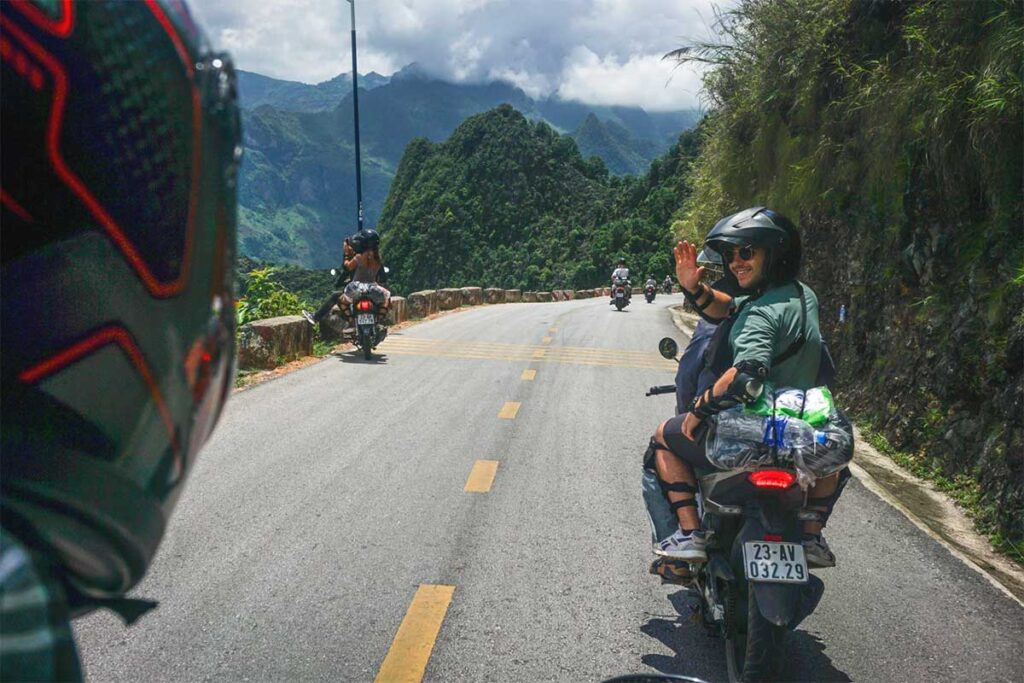
The Ha Giang Loop is the main draw in this rugged region. You’ll travel through remote villages, winding mountain passes, and dramatic landscapes, whether by motorbike or car. Ha Giang is far less developed than Sapa, offering a more authentic, off-the-beaten-path experience for those looking to immerse themselves in nature and local culture.
Time you need
The amount of time you have can greatly affect your decision between Sapa and Ha Giang. If you’re on a tight schedule, Sapa may be the quicker choice, while Ha Giang requires a bit more time to fully explore.
Sapa – 2 to 3 days
For Sapa, 2-3 days is ideal, allowing you to trek through the terraced rice fields, visit local villages, and explore the main highlights. While it’s possible to enjoy a quick visit in 2 days, you may miss some of the region’s best experiences.
Ha Giang – 3 to 4 days
The Ha Giang Loop requires at least 3 days to fully appreciate its breathtaking scenery and remote villages. You can rush through the loop in less time, but it’s best to allocate 4 days for a more immersive experience. The longer you stay, the more you’ll be able to explore this rugged, authentic region.
Tourist experience
Tourism can have a big impact on both Sapa and Ha Giang, but each offers a different experience depending on where you go and how much time you spend exploring.
Sapa
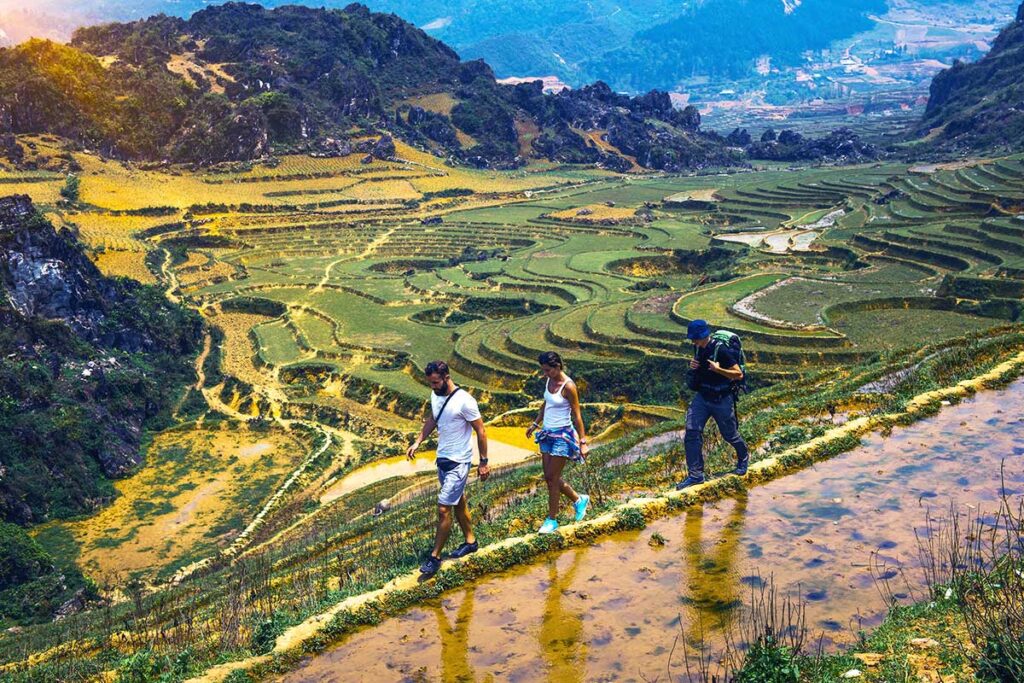
Sapa is very touristy, especially in the town center and popular trekking routes. Expect crowds around the main markets and key attractions. However, you can escape the crowds by venturing to less-visited areas like remote villages and hidden trekking paths. While Sapa is more developed with better infrastructure, this also means it’s more crowded in certain spots.
Ha Giang
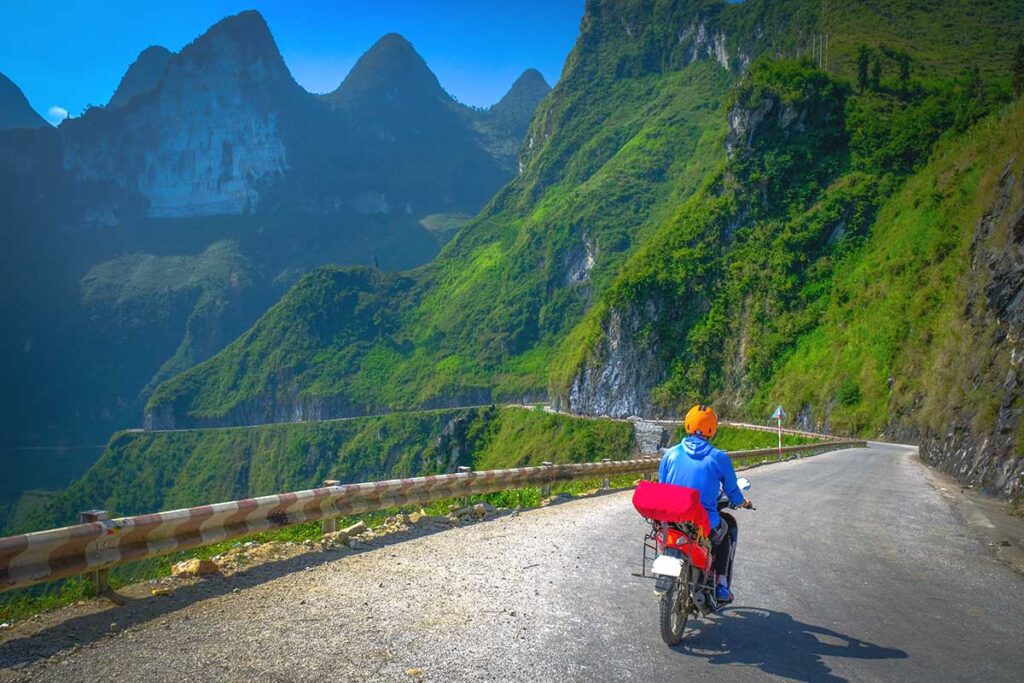
Ha Giang used to be a more peaceful destination, but with the rising popularity of the Ha Giang Loop, it’s seen an increase in visitors. While some parts of the loop now draw crowds, Ha Giang is still much more spread out and less developed than Sapa. There are plenty of off-the-beaten-path spots where you can enjoy the natural beauty without encountering many tourists, especially in the more remote areas.
Accommodations in Sapa and Ha Giang
Accommodation in both destinations varies greatly, reflecting their level of development and the type of experience they offer.
Sapa – More developed accommodations
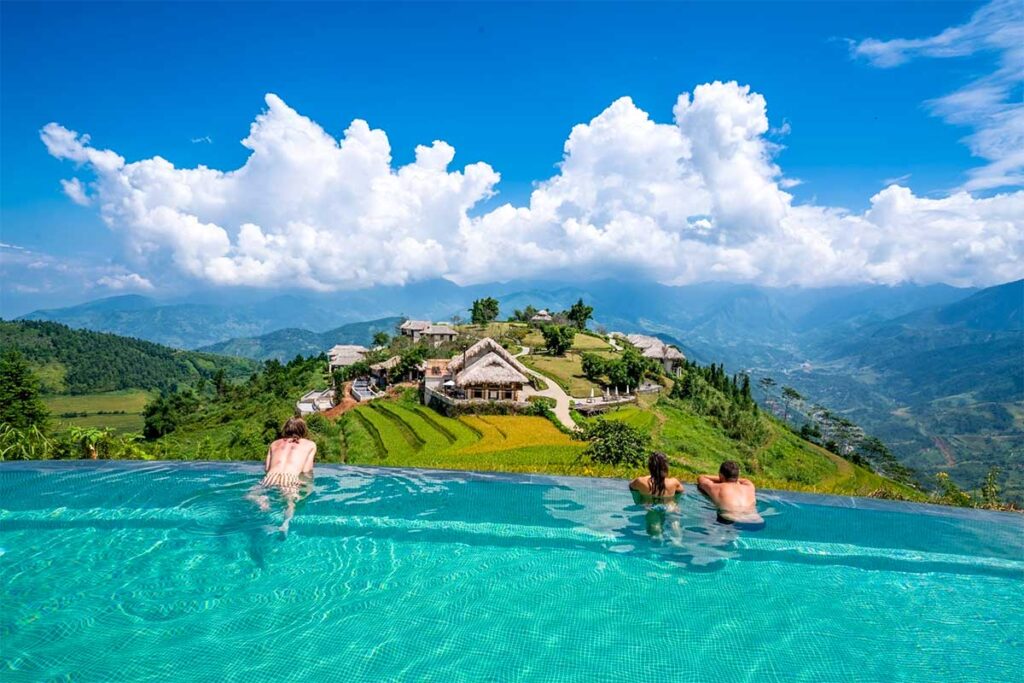
Sapa offers a wide range of accommodation options, from budget hostels to luxury resorts. You’ll find many choices for comfort and amenities, including modern hotels, upscale resorts, and cozy guesthouses. Whether you’re looking for a basic place to rest or a luxury stay, Sapa provides something for every traveler.
Ha Giang – More basic accommodations
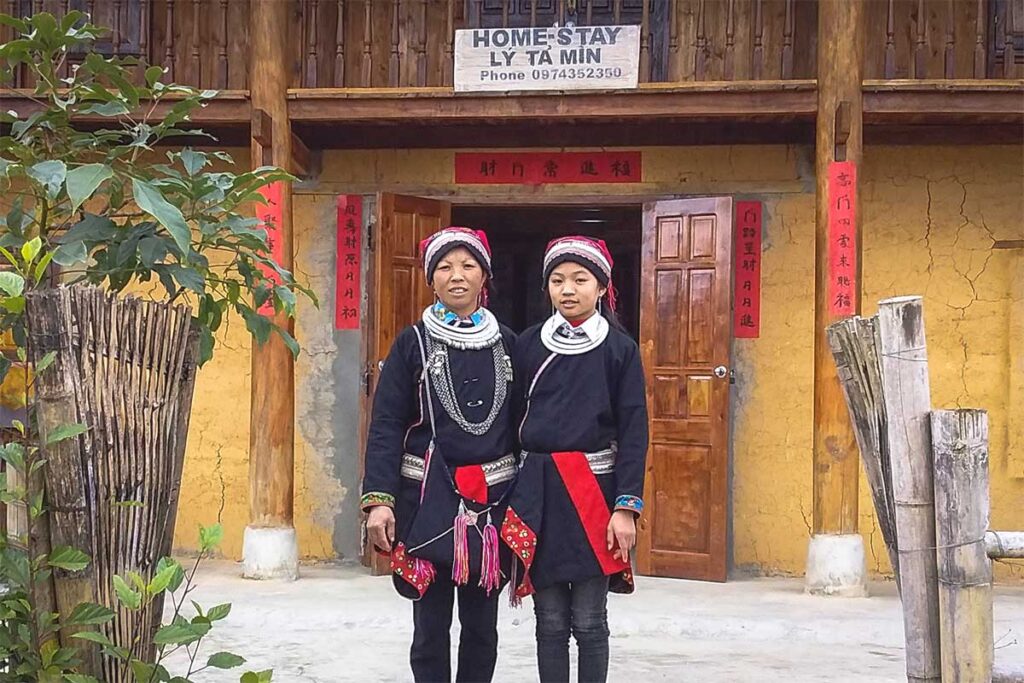
Ha Giang offers more basic accommodation options, such as homestays and small hotels along the Ha Giang Loop. While the region is slowly developing, it still retains a rustic, local feel. If you’re after luxury, Ha Giang might not be the place for you, but it’s perfect for those seeking an authentic, immersive experience in rural Vietnam.
Getting there
Neither Sapa nor Ha Giang has an airport, so you’ll need to travel by road. Here are the main transport options for getting to each destination.
Sapa
To get to Sapa, you can take a train or bus. The road journey takes around 5-6 hours by bus or private car. The train is a great option as it gets you most of the way to Lao Cai, followed by a 1-hour drive to Sapa. Sleeper buses and vans are also available, offering comfort for longer trips.
Ha Giang
Getting to Ha Giang is only possible by road. The journey takes about 5-6 hours by bus or car. Sleeper buses and vans are the primary modes of transport to Ha Giang. While the travel time is similar to Sapa, the train experience in Sapa offers a unique and more comfortable option for overnight travel.
Conclusion: Sapa or Ha Giang?
Both Sapa and Ha Giang offer stunning landscapes and unique experiences, but which one you choose depends on what kind of adventure you’re looking for. Sapa is perfect for those seeking comfort, modern amenities, and scenic trekking, while Ha Giang is ideal for travelers looking for a more rugged, off-the-beaten-path experience. Here’s a quick guide to help you decide:
Choose Sapa if:
- Trekking: You want great trekking and the chance to visit terraced rice fields.
- Activities and amenities: You enjoy a wide range of activities and modern amenities.
- Accommodation options: You need a larger variety of accommodation, from budget to luxury.
- Comfort: You’re looking for a comfortable experience with easy access to tourist spots.
Explore Tours in Sapa
Looking for inspiration on what to do in Sapa? Check out our list of Sapa tours for guided trekking, homestays, and local experiences. From scenic hikes through rice terraces to visits to remote villages, see what fits your adventure style.
Choose Ha Giang if:
- Authenticity: You prefer a less developed, more authentic experience.
- Road trip: You’re interested in a motorbike or car road trip along the stunning Ha Giang Loop.
- Landscapes and villages: You want to explore rugged landscapes and local villages.
- Off-the-Beaten-Path: You’re looking for a unique, off-the-beaten-path adventure and don’t mind more basic accommodations.
Explore Tours in Ha Giang
Ready for the Ha Giang Loop? See our selection of Ha Giang tours, including motorbike trips, car tours, and some with Sapa combos. Discover the rugged landscapes, local villages, and off-the-beaten-path routes to plan your next adventure.
